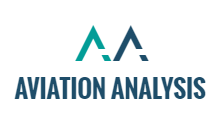Trading platforms provide several methods we can leverage to increase our profits. Two of the most known are Margin and Futures trading. Yet we usually confuse them to be the same. Truth is that they have more differences than similarities. In this article, we will show you the fundamental characteristics of each one.
What is Margin Trading?
In margin trading, investors borrow money from a broker to buy securities and financial assets. The trader will use a combination of his own money and the brokers to open a bigger position. As a result, this position will use leverage and require having a maintenance margin percentage, usually set by the broker. So, the key here is that you are operating the actual asset (stock, bonds, crypto, etc.) unlike futures that we will explain later.
Find an example below of how this work. You buy $20.000 of bitcoin using $10.000 of your own and $10.000 that you borrowed from the broker. The broker sets a 40% maintenance margin.
| Loss Scenario | Profit Scenario |
| – Bitcoin value falls 30% and your position goes from $20.000 to $14.000 decreasing your margin percentage to (14000 – 10000) / 14000 = 28.57%.
– To get to the asked level you will need to add $1.600 as ((4.000 + 1.600) / 14000) = 40%. |
– Bitcoin value increases 40% and your position goes up to $28.000, so you sell and take profits.
– $28.000 – $10.000 (that you return to the broker) – $10.000 (your initial investment) = $8.000 profit. – If you would not have used margin, a 40% increase on a $10.000 investment would return only $4.000 profit |
What is Futures trading?
A future is a financial contract whose value derives from an underlying asset. A buyer and a seller agree to exchange that underlying asset for a specific price on a future date. The buyer must buy the underlying asset on the specified date or before. The same goes for the seller. Indexes, commodities, bonds, and cryptocurrencies are some of the prime examples of possible underlying assets. The main takeaway here is that traders never own the underlying asset when trading futures, they only own a contract and the rights and obligations that come with it.

In futures trading, since you cannot get the underlying asset, you can only open a position on the contract, either long or short. Using leverage, you can trade greater positions than what the money in your account would buy you in the spot market. It can be a double-edged sword since it can increase profits or amplify losses.
For example, if you want to open a $1.000 position on a contract and you are using x10 leverage, you will need to pay $100. Generally speaking, futures trading allows high leverage, which is one of the main reasons we see a lot of liquidations.
Find below the fundamental differences between these trading strategies.
| Margin Trading | Futures Trading |
| – You own the actual assets.
– You borrow money to increase the number of assets you can own. – Allows minor levels of leverage. |
– You own a contract that derives from an underlying asset.
– You borrow money to increase the amount of money in your position. – Allows tremendous levels of leverage – You can only trade them in specific markets. |
In conclusion, both methods have their pros and cons and which one you should use will depend on your situation. Whether you feel more comfortable with high leverages and do not want to own any asset other than your cash, then futures trading is your choice. On the contrary, if you want to own the assets and would like to increase your position using small leverage, margin trading is the option.

Avid music fanatic. Communicator. Social media expert. Award-winning bacon scholar. Alcohol fan.

